In the shown arrangement of the experiment of the meter bridge if AC corresponding to null deflection of galvanometer is x. what would b e its value if the radius of the wire AB is doubled:-
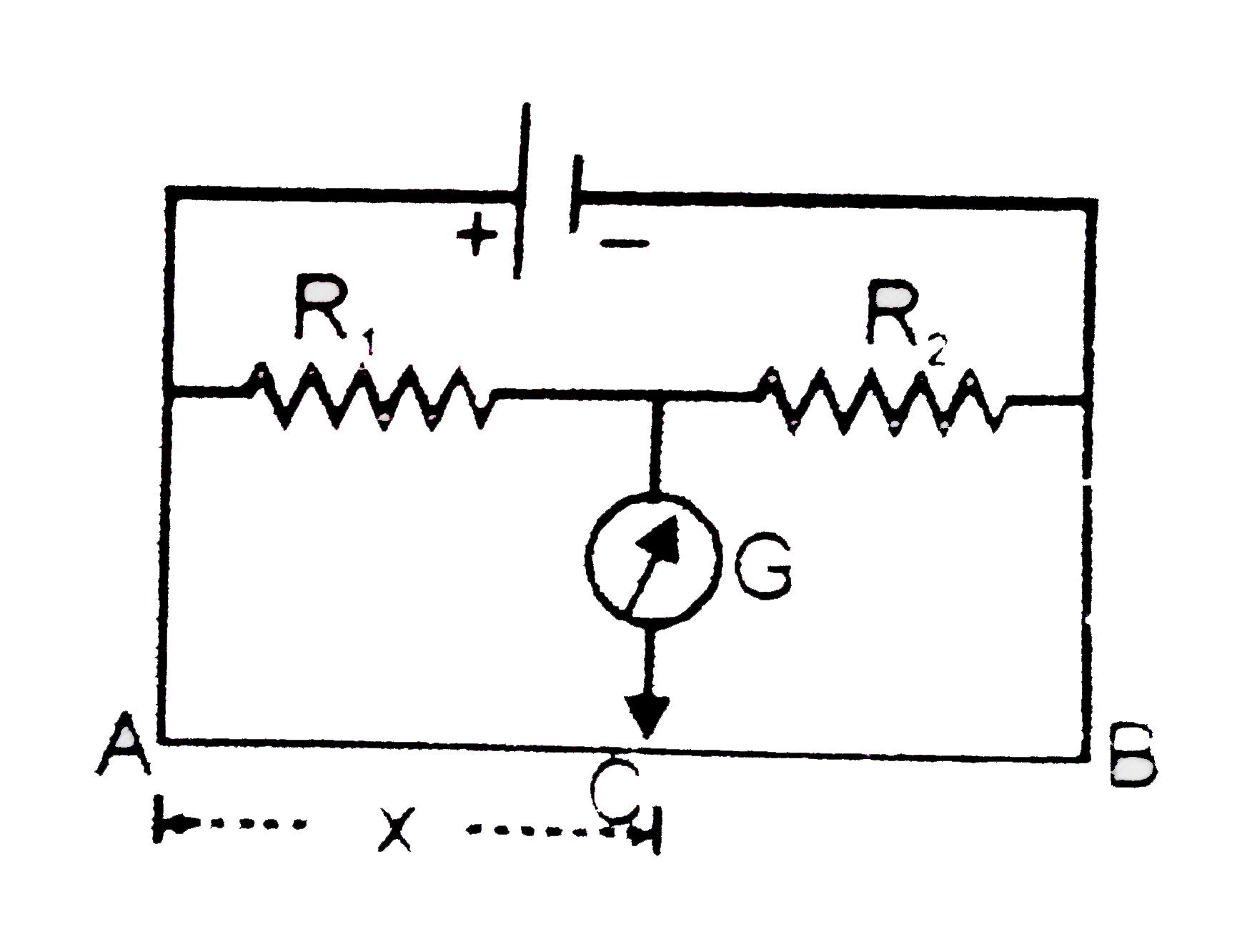
For null deflection of galvanometer in a metrebridge experiment,
R1R2=RACRCB=x(100−x)
Since R1/R2 remains constant, x/(100−x) also remains constant. The value of x remains as such.
∴Length of AC = x
Topper's Solved these Questions
- CURRENT ELECTRICITYBOOK - AAKASH SERIESCHAPTER - CURRENT ELECTRICITYEXERCISE - EXERCISE - IA
2 Videos
- CURRENT ELECTRICITYBOOK - AAKASH SERIESCHAPTER - CURRENT ELECTRICITYEXERCISE - ADDITIONAL PRACTICE EXERCISE (LEVEL -II PRACTICE SHEET (ADVANCED) (Linked Comprehension Type Questions))
9 Videos
- CURRENT ELECTRICITYBOOK - AAKASH SERIESCHAPTER - CURRENT ELECTRICITYEXERCISE - PROBLEMS (LEVEL-II)
27 Videos
- DUAL NATURE OF RADIATION AND MATTERBOOK - AAKASH SERIESCHAPTER - DUAL NATURE OF RADIATION AND MATTEREXERCISE - PRACTICE EXERCISEX
42 Videos
Similar Questions
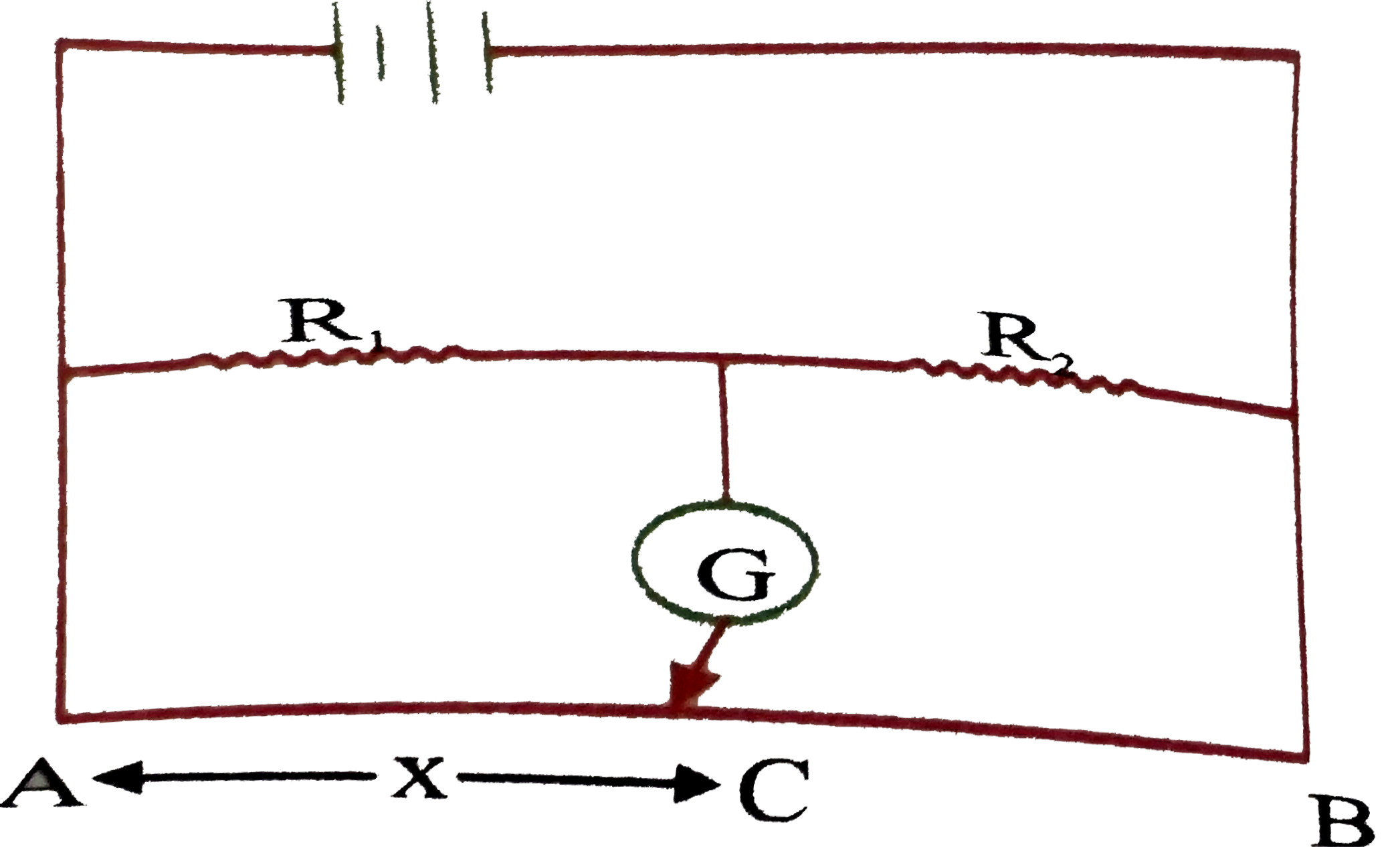
In the shown arrangement of the experiment of the meter bridge if AC corresponding to null deflection of galvanometer is x, what would be its value if the radius of the wire AB is doubled?
View SolutionIn the shows arrangement of a meter bridge, if AC corresponding to null deflection of galvanometer is x, what would be its value if the radius of the wire AB is doubled?
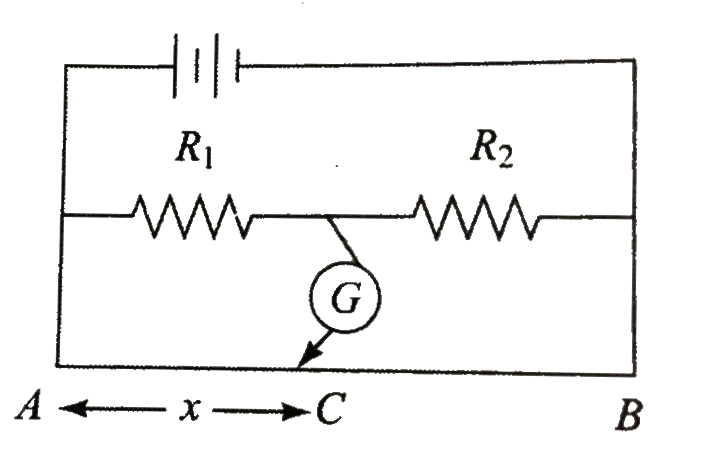
View SolutionStatement I: In the meter bridge experiment shown in figure, the balance length AC corresponding to null deflection of the galvanometer is x. If the radius of the wire AB is doubled, the balanced length becomes 4x.
Statement II: The resistance of a wire is inversely proportional to the square of its radius.
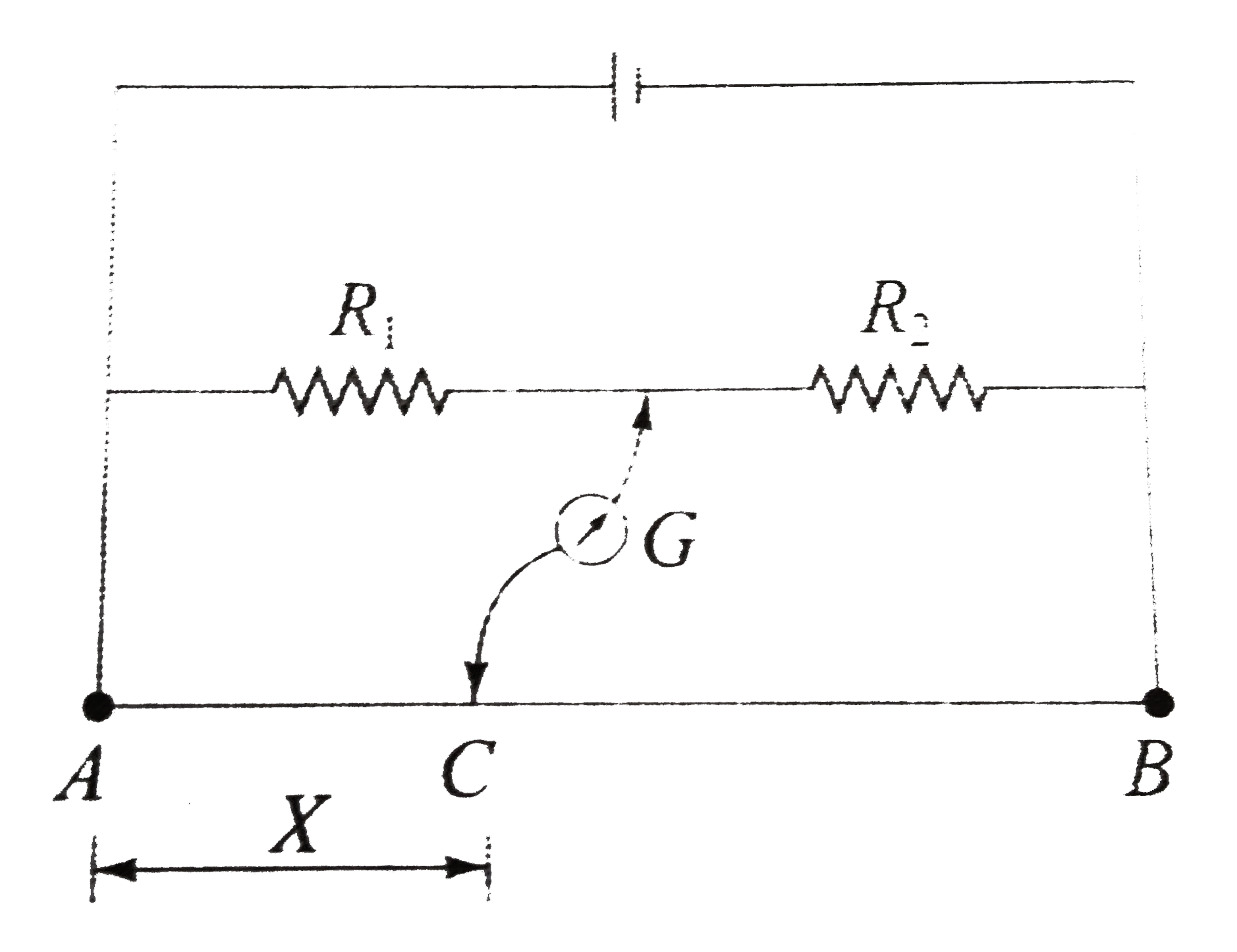
View SolutionSTATEMENT-1 : In the meter bridge experimeter shown in figure the balance length AC corresponding to null deflection of the galvanometer is x. If the radius of the wire AB is doubled, the balance length becomes 4x.

and
STATEMENT-2 : The resistance of a wire a inversely proportional to the square of its radius.
View SolutionShown in the figure below is a meter- bridge set up will null deflection in the galvanometer.
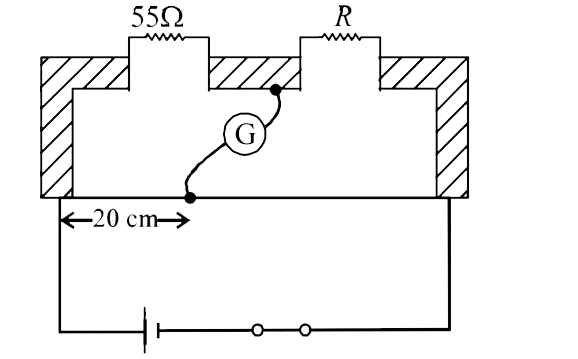
The value of the unknown resistor R is
View SolutionA meter bridge setup is shown in the figure. If there is null deflection in galvanometer when length AC = 20 cm, then the value of resistance R is

View SolutionA nichrome wire AB, 100 cm long and of uniform cross section cross section is mounted on a meter scale the points A and B coinciding with 0 cm and 100 cm marks respectively. The wire has a resistance S = 50 ohm, Ay point C along this wire, between A and B is called a variable point to which on end of and electrical element is commeted. In the following questions this arrangement will be referred to as 'wire AB'.
In the circuit adjacent arrangement it is found that deflection in the galvanometer is 10 divisions. Also the voltage across the 'wire AB' is equal to the across the galvanometer. the current sensitivity of the galvanometer is about.
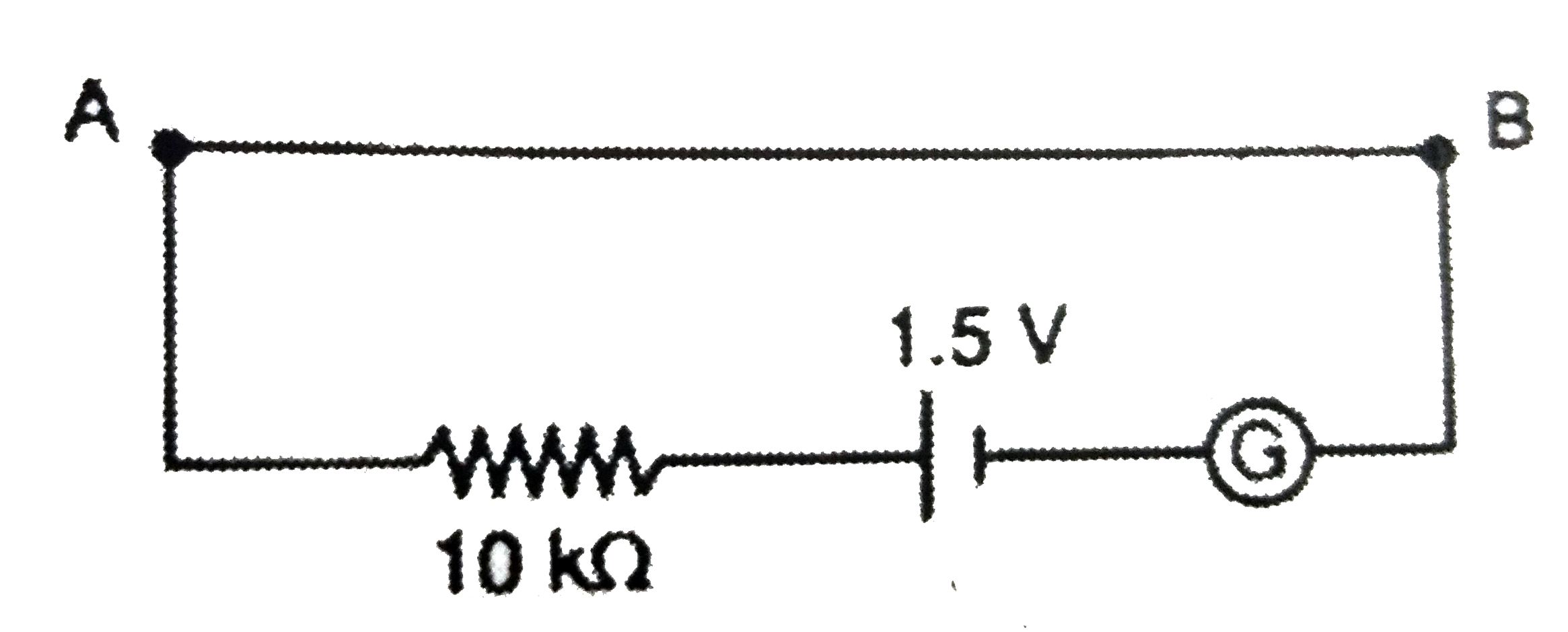
View SolutionA straight segment OC(of length L meter) of a circuit carrying a current Iamp is placed along the x- axis ( fig.). Two infinetely long straight wires AandB , each extending from z=−∞→+∞, are fixed at y = -a meter and y = +a meter respectively, as shown in the figure.
If the wires AandB each carry a current Iamp into the plane of the paper, obtain the expression for the force acting on the segment OC. What will be the force on OC if the current in the wire B is reversed?
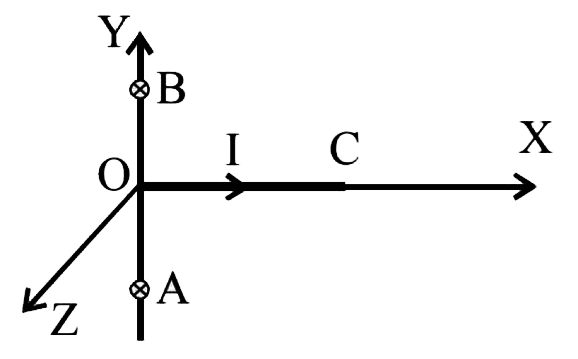
View SolutionConsider the potentiometer circuit arranged as in figure. The potentiometer wire is 600cm long. At what distance from the point A should the jockey touch the wire to get zero deflection in the galvanometer? b) If the jockey touches the wire at a distance of 560cm from A, What will be the current in the galvanometer?
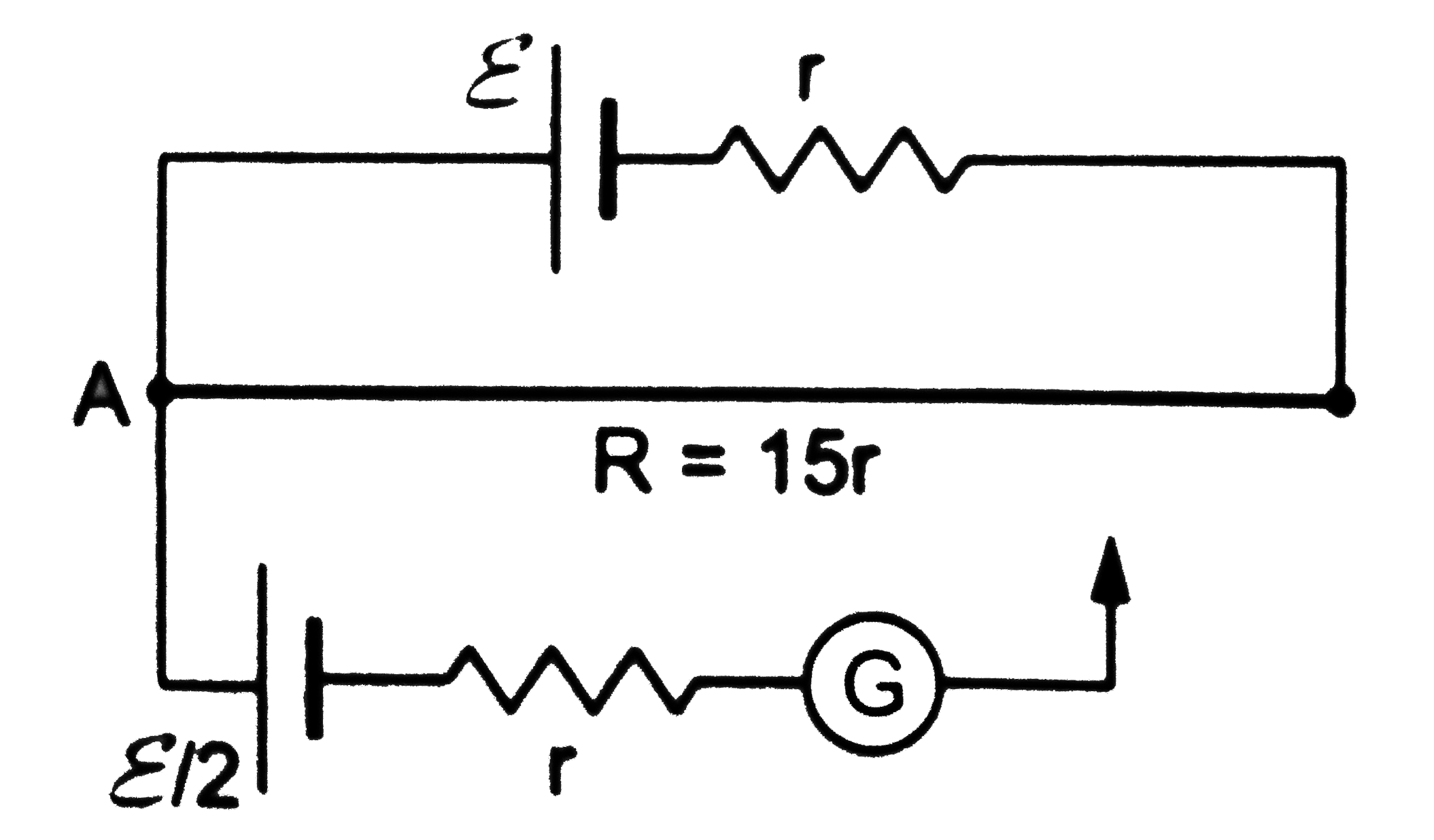
View SolutionWhile doing an experiment with potentiometer (see figure) it was found that the deflection is one sided and (i) the deflection decreased while moving from one and A of the wire, to the end R, (ii) the deflection increased, while the jockey was moved towards the end D.
(a)Which terminal positive and negative of the cell E1 is connected at X in case (i) and how is E1 related to E ?
(b)Which terminal of the cell E1 is connected at X in case (i in a) ?
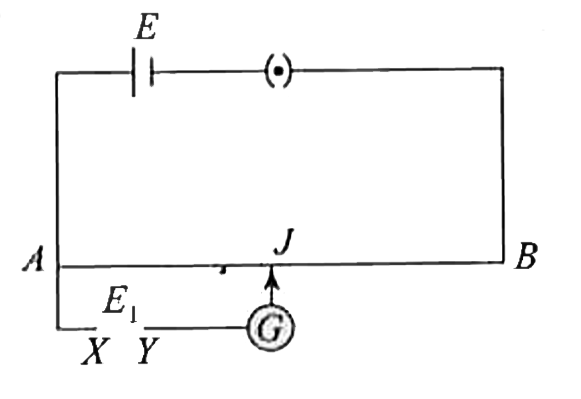
View Solution